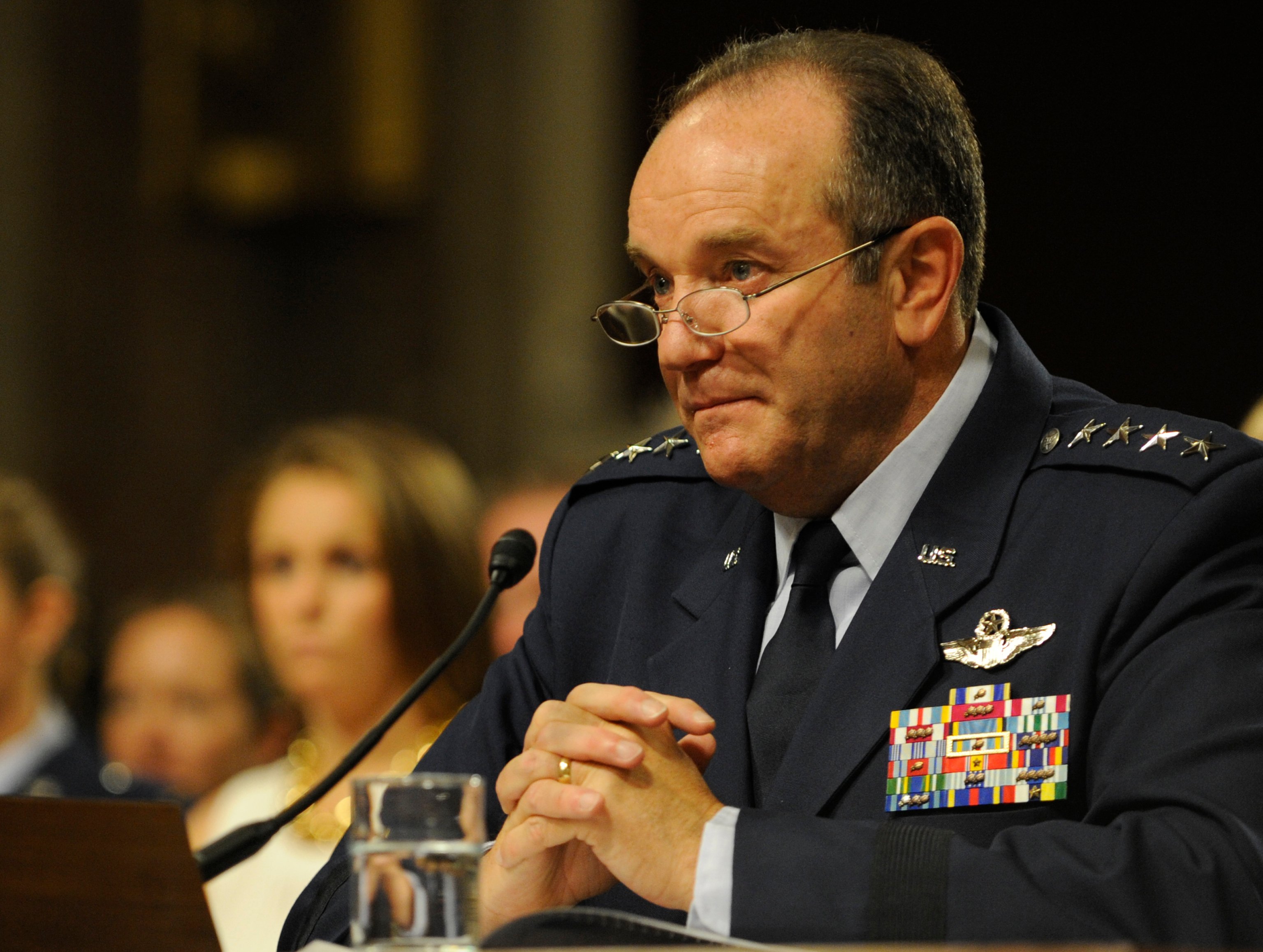
The top U.S. commander in Europe said Monday that Moscow was supplying heavy, anti-aircraft weapons to Russian-backed separatists groups battling for control of the country’s eastern border.
Gen. Philip Breedlove, head of U.S. European Command, confirmed that anti-aircraft weapons were part of the armed support being provided by Moscow to separatist groups fighting in eastern Ukraine.
Along with the weapon deliveries, Breedlove also said that training missions being carried out by Russian forces along the eastern Ukrainian border included the use of vehicle-borne anti-air missiles.
But despite the confirmed deliveries of the anti-aircraft weapons and training by Russian forces, Breedlove was wary of making the connection between the separatists’ weapon stockpiles and the recent shootdown of Ukrainian military aircraft.
“We need to allow the facts to be reported out,” Breedlove told reporters at the Pentagon. “We have not tied the string together yet” on Russia’s involvement in the shoot down of Ukrainian aircraft.
Recent reports claim Russian-backed separatist groups shot down a Ukrainian military helicopter in the eastern part of the country last Tuesday.
The aircrew aboard the Mi-8 helicopter were killed in the attack near Slovyansk, Vladislav Seleznev, spokesman for Ukraine’s anti-terror operation, told CNN last week.
The helicopter was taken down by a MANPAD, Seleznev said at the time. The attack took place days after Kiev had reached a tentative cease-fire deal with Russian opposition forces in the country.
That attack came weeks after separatist forces reportedly took down a Ukrainian Il-76 army transport plane in Luhansk, killing the crew and the 40 paratroopers aboard the aircraft. A surface-to-air missile was used to destroy the aircraft, Kiev said at the time.
Aside from the attacks on Ukrainian aircraft, Breedlove also noted command officials were growing concerned with the “frequency” of incidents where Russian fighter jets and warships have harassed American and allied forces in the region.
The actions of Russian forces conducting low aerial passes above U.S. warships in the Black Sea, or interfering with naval exercises by American allies, were “not out of the norm”, but the number of times these near-misses have occurred is raising red flags inside EUCOM.
In April, a Russian fighter spent 90 minutes making low-level passes near a U.S. ballistic missile defense (BMD) guided missile destroyer on station in the Black Sea, a defense official told USNI News at the time.
A Sukhoi Su-24 Fencer flew as close as 1,000 yards from USS Donald Cook (DDG-75) at an altitude of only 500 feet, the official said.
The fighter made up to 12 passes on the destroyer after not responding to several attempts by the ship to contact the Fencer via radio. There was a second Su-24 in the region but did not engage Cook.
That said, Russian supplies of heavy, anti-aircraft weapons to Ukrainian separatist groups and aggressive actions toward U.S. forces in the region runs counter to the rhetoric of de-escalation coming from Moscow, according to Breedlove.
Despite pledges by the Russian government to quell the violence that has engulfed eastern Ukraine since April, Moscow’s “actions on the ground speak for themselves,” the four-star general said.
“What we see is continued conflict” in spite of Russia’s overtures toward peace in the region. That said, the U.S. and its allies “need to watch with a wary eye” Moscow’s true intentions along the Ukrainian border.





